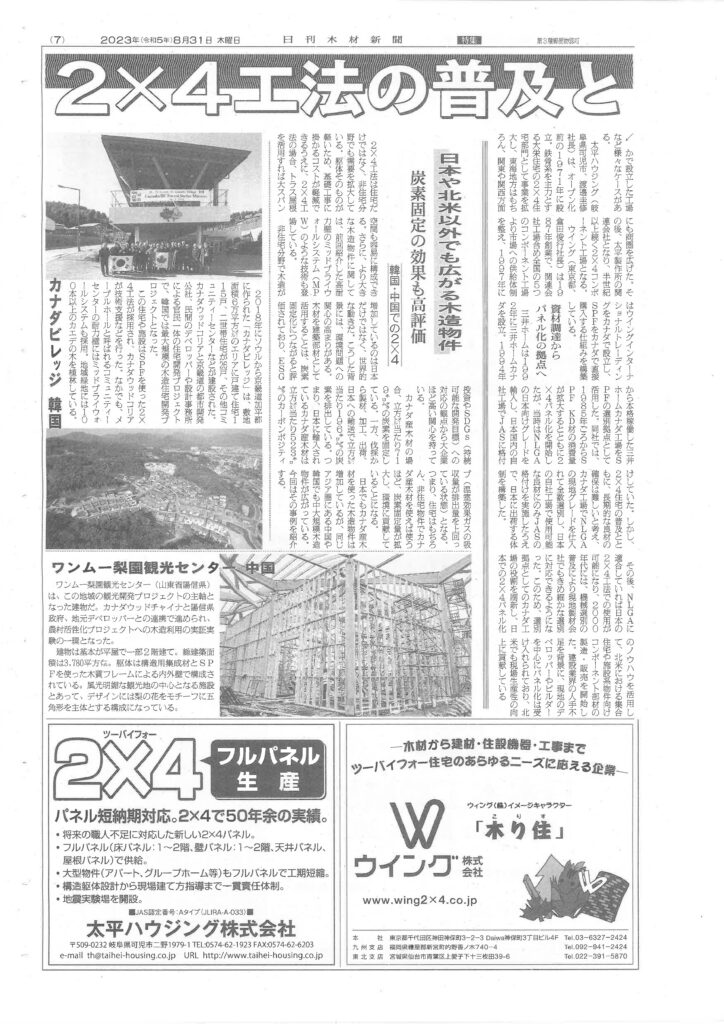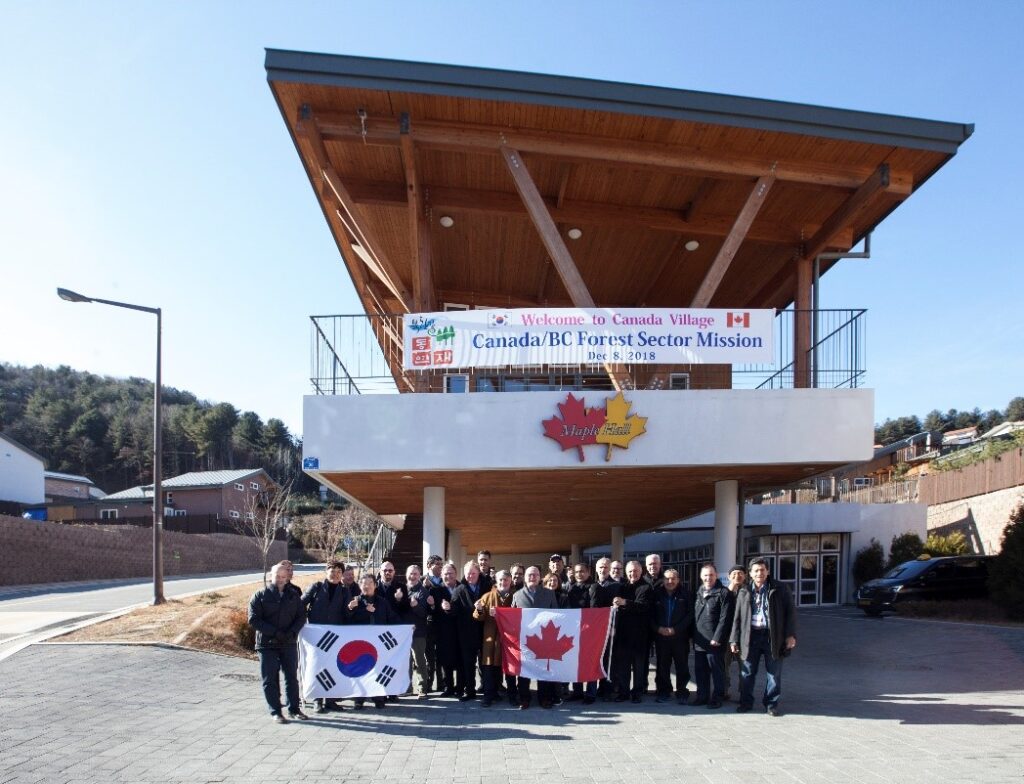Celebrating 100 Years of Wood Trade between Canada and Japan : Part IV
On August 31st, the Nikkan Mokuzai newspaper (Daily Forest Products Journal) unveiled the fourth installment of articles in the series commemorating the 100th anniversary of Canada-Japan wood products trade. Building upon the groundwork laid by the previous three articles, which covered the timeline from 1923 to the present, these latest articles delve deeper into the historical trajectory of wood products and construction methods, with a focused exploration of “2×4 construction and SPF lumber”.


The introductory section outlines the essence of the 2×4 method and highlights its attributes as a high-performance system, boasting remarkable qualities such as seismic resilience, fire resistance, and insulation capabilities. This potent combination of attributes has been effectively harnessed in Japan through standardized Canadian dimension lumber products, starting from the utilization of green Hem-fir and Douglas fir, eventually progressing to SPF lumber.
The subsequent article traces the evolution of the 2×4 method, beginning with its origins in the United States and its introduction to Japan, primarily in Hokkaido, during the 1870s. While the method initially struggled to gain traction due to the prominence of traditional post and beam housing, as well as steep import tariffs on wood products that rendered 2×4 homes costly, the landscape shifted significantly post World War II. The government’s decision in 1974 to standardize the 2×4 construction method and remove the need for special approvals opened up avenues for growth. Simultaneously, Canadian dimension lumber producers entered the market, and under the leadership of Mr. Yoshio Fujimoto, who served in the COFI Japan office from 1975-1979, the use of SPF in Japan proliferated. Mr. Fujimoto’s efforts played a pivotal role in developing SPF J-grade, designed to meet the exacting quality and performance standards of the Japanese market.
As demand for 2×4 housing surged, component factories sprung up across Japan. The article shines a spotlight on two prominent companies—Taihei Housing and Wing—while also tracing the journey of Mitsui Home Canada from its inception in 1994. What initially began as a facility to regrade lumber destined for their plants in Japan has evolved into a hub that imports the Japanese-developed 2×4 panelization system for local housing production in North America.
The article’s focus then shifts to the broader landscape, examining how the demand for the 2×4 construction method is extending into the medium-sized non-residential sector in Japan. The rationale is anchored in environmental considerations and cost efficiencies of wooden buildings as opposed to concrete or steel structures. Notably, the adoption of Canadian lumber is gaining momentum not only within Japan but also in neighboring countries such as China and South Korea. Highlighting projects like the Canadian Village in Korea and the Binzhou Yangxin Ten Thousand Mu Pear Garden Tourism Center in China, these examples underscore how Canadian wood products have sparked exciting and innovative projects beyond Japan’s borders.


For those interested in receiving the translated articles, please contact the writer at [email protected].


